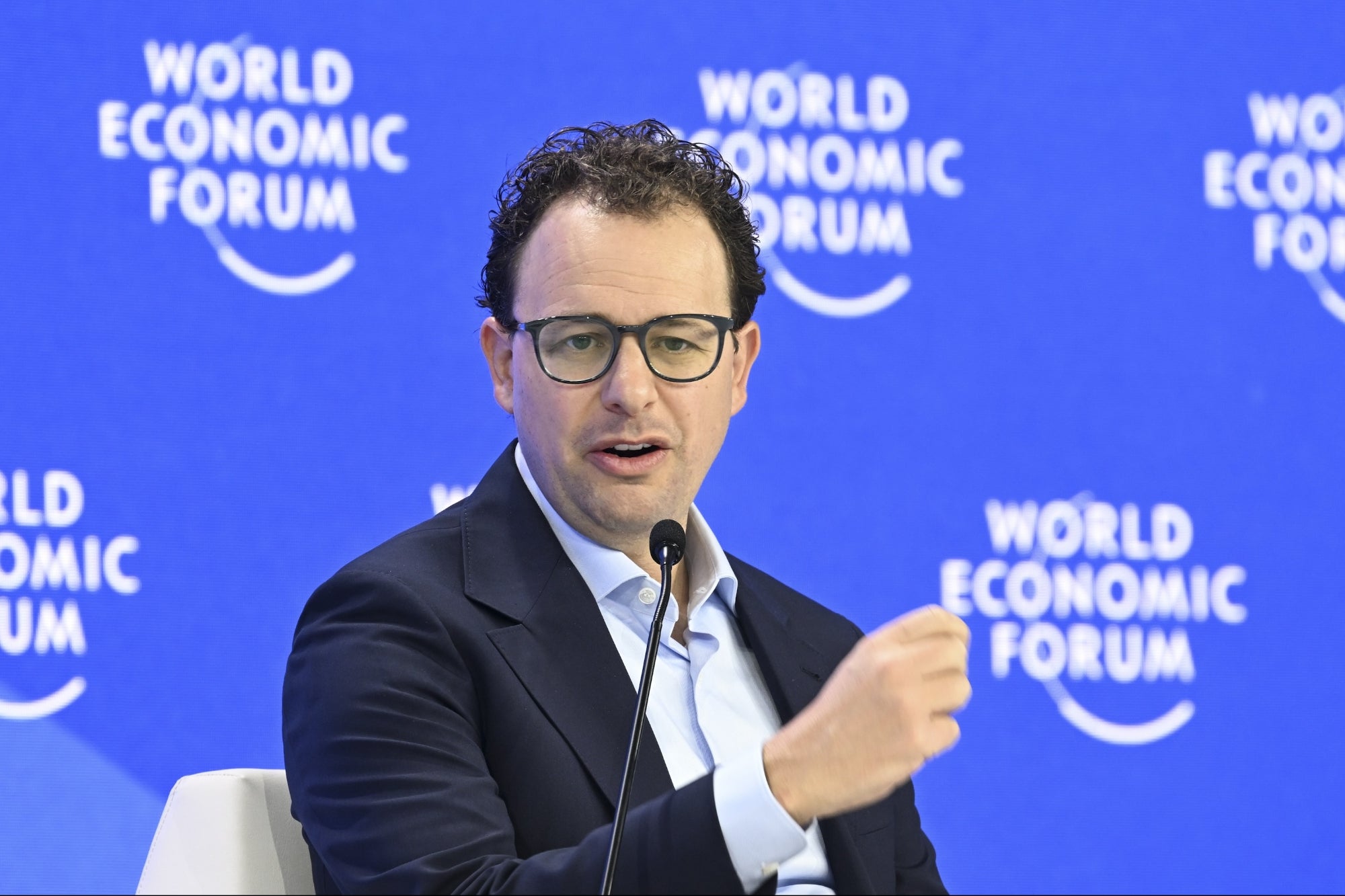How to Grow Your Email List and Sales Pipeline by Creating Your Own Free Mini Course Discover the process for creating a valuable lead magnet that will help you attract and convert your target audience.
By Terry Rice Edited by Dan Bova
Opinions expressed by BIZ Experiences contributors are their own.

How do I get more leads? This is a common question posed by many consultants, BIZ Experiencess and organizations. And, depending on your industry, it may be even harder to answer these days. Creating a lead magnet — free content given away in exchange for your audience's contact information — is one of the best ways to grow your email list and demonstrate your expertise.
Common examples include:
- eBooks
- Cheatsheets
- Templates
Unfortunately, common approaches will get you subpar results as people become overexposed to — and tired of — the same marketing tactics.
So, how can you stand out and attract leads while not resorting to gimmicky approaches? Create a free mini-course for your audience. A mini-course is a shorter online course that takes about 2 hours or less to complete.
You might be thinking "whoa, that sounds like a lot of work" and that's a good thing for two reasons.
This will help you stand out since others in your industry won't want to put in the effort
It's actually not that challenging, but the perceived value will be much higher than other lead magnets
I recently created a free mini-course How to Get More Coaching and Consulting Clients. It took me a total of 12 hours to create and brought in over 400 leads in just four weeks.
I'll explain how you can do the same.
Related: The 10-Step Effective Content Marketing Campaign
Determine the problem your course solves
By design, a mini-course should deliver one quick win to your audience.
Before creating your course, first consider:
What questions do you constantly hear from your audience?
What are some of the challenges they face on a daily basis?
What transformation can you deliver that will earn their trust?
You obviously don't want to solve every problem in a free course, but this will help you determine the value you want to provide.
Once you deliver that value — and earn their trust — you can then explain other ways you can help.
For example, a Digital Marketing consultant could offer a free course on how to create engaging Instagram Reels then follow up with an offer for more bespoke consulting. A company that offers Personal Finance software could provide a course on how to reduce your monthly expenses, then market their software as a way to take even more control of your finances.
Related: Learn How to Launch a Side Hustle from an Angel Investor in This $30 Course
Create an outline for your course
You're an expert on your audience and the challenges they face, so determining your topic may be relatively easy. Unfortunately, knowing how to structure a course is where many people start to encounter challenges. And, oddly enough, it's that same expertise that gets in the way. It's vitally important to think from the audience's perspective.
Consider the following.
What are the step-by-step actions they must take to solve this problem or accomplish this goal?
Then, chronologically list all steps that need to take place before this can happen.
A colleague of mine recently created a course "How to Create a One-Minute video That Will Inspire and Attract Your Audience" using Teachable, a platform that allows you to create and sell online courses.
These are the steps she identified:
Step 1: Clarity on yourself and your audience
Step 2: Effective storytelling
Step 3: Pre-production
Step 4: Shooting
Step 5: Editing and Distribution
Next, you'll want to get more granular on all the steps involved.
For example:
Step 1: Clarity
Defining your personal brand voice
Defining your target audience for the video
Determining the goal of video and call to action
You'll do this for each section, then further expand by creating the content you'll cover. This includes your script, slides and videos. Creating a script can seem time-consuming, and you may be tempted to wing it, but you'll most likely save time and ensure you're clearly explaining each step by writing everything down in advance.
Decide how you'll present your content
Don't assume you have to rush out and buy a bunch of expensive gear! You may be fine just creating slides and recording yourself talking over them. Loom is a great platform to consider since you can record your screen and show yourself on camera at the same time. There's a free version available that should be all you need for your course.
If you decide to create a talking-head video — where you appear on camera explaining your topic — consider using the camera on your computer or phone before purchasing a more expensive camera. Remember, this is a mini-course, you're not trying to win an Academy Award. You can edit your videos using free programs such as iMovie and OpenShot.
Depending on the topic and your audience, you combine these two approaches. Just make sure you're noting how you want to present your content as you fill out the steps. It's easier to do so now while it's fresh on your mind than it would be to make an entire extra step of this process later.
Related: 5 Tips for Creating Quality Video Content Even If You're Clueless How to Begin
Plan supplemental materials
To make the course more interactive -- and deliver on the desired transformation -- consider providing workbooks, checklists or anything else that will allow people to get a more bespoke take away from your course. In fact, you may want to follow each section with an action item and list of additional resources.
For example:
Section 1: Clarity
Defining your personal brand voice
Defining your target audience for the video
Determining the goal of video and call to action
ACTION ITEM: Complete Founder questionnaire and Video Tone exercise.
Since this is a mini-course, don't spend too much time on this, but your effort will greatly increase the perceived and provided value from your course.
Related: B2B Sales Strategies for the "New Normal" of COVID-19
Distributing your course
Now it's time to get your course in front of your target audience, you can start by promoting it via social media. On LinkedIn, mention your course in your background photo to immediately grab the attention of anyone who visits your profile. On other platforms, such as Twitter and Instagram, you can link to it directly from your profile and provide a call to action.
Beyond that, be sure to create a post announcing the launch of your course (example here) and continue referencing it on social media within the context of your other posts. If you'd like to take a more direct approach -- which I highly recommend -- you can also message people who fit your target audience and may find value from your course.
Here's a template to get you started.
"Hey Dan,
Totally coming out of the blue here but I noticed you recently commented on a #Instagram post and I'm wondering if you would be interested in my free course "How to Create Engaging Instagram Stories." Happy to send it your way, or just connect in general. Thanks!"
Another option is to partner with organizations that already have access to your audience. You can either offer the course directly to them and ask them to share it, or ask if they'd be interested in you presenting the key takeaways during a webinar. For example, I recently delivered a talk during Freelance Business Week. Although I wasn't compensated for my participation, they actively shared my free course with their audience and I was able to quickly increase the number of enrollments.
Related: Your Best Strategy for Increasing Sales From Your Laptop
Following up
Once people sign up for your course, you'll want to reach out and encourage them to take additional action. Consider offering a 1:1 consultation or a live webinar where you help attendees implement what they've learned from the course. There are several options available but make sure you do something. Adding someone to your email list is just the beginning of a relationship, and you'll want to continue providing value going forward.
Are you a consultant, and need help with the pricing, packaging and promotion of your consulting business? Join BIZ Experiences's online course "How to Start a Successful Consulting Business". You'll gain access to over 40 instructional videos, The Consulting Playbook and join live weekly Q&A calls. Learn more and sign up today!










